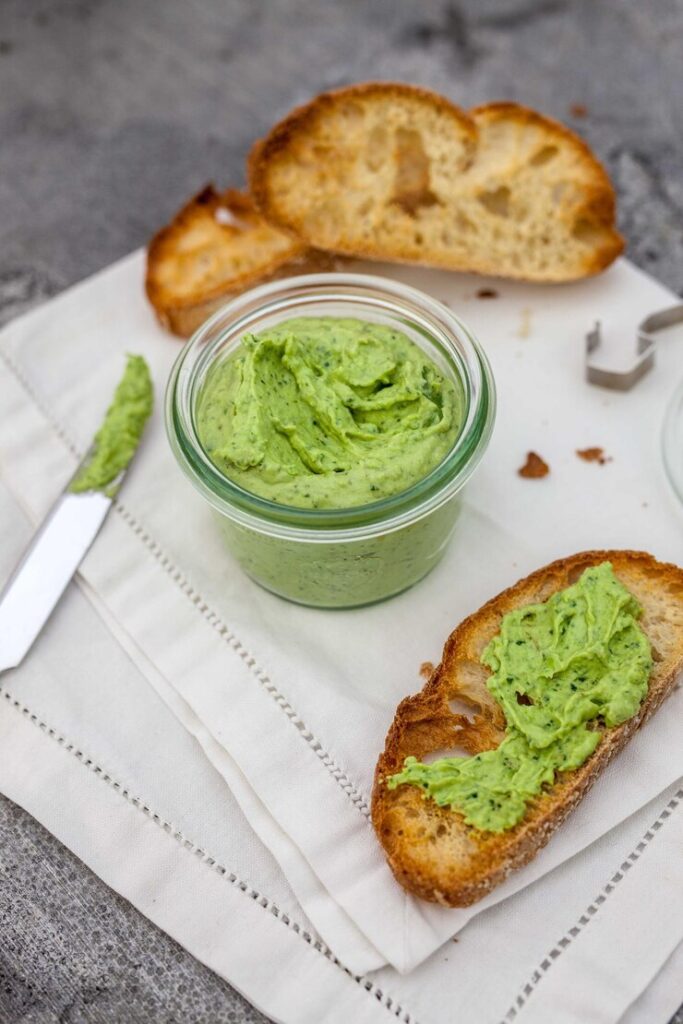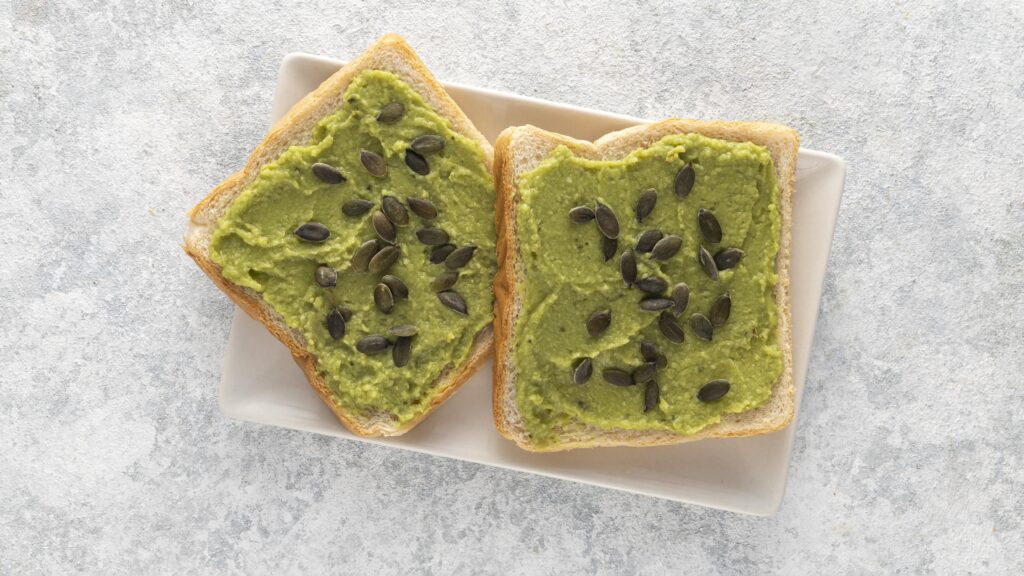Pistachio Butter: Ultimate Health Boost, Cost Breakdown & DIY Guide
Introduction
Pistachio butter has been gaining attention as a creamy, flavorful alternative to traditional spreads. In this article, you’ll discover why this nut-based butter is so good for you, why it often comes with a higher price tag, how it stacks up against peanut butter, and how to make it at home. We’ll walk you through each step—sharing health benefits, cost breakdowns, flavor comparisons, and a step-by-step recipe using everyday kitchen tools. By the end, you’ll understand what makes this nut spread special and how to enjoy it daily. Let’s dive into the nutty goodness!

Part 1: Why Pistachio Butter Is Good for You
Pistachio butter isn’t just delicious—it’s a nutrient powerhouse. It contains high-quality plant-based protein, packing in about 6 grams of protein per 2 tablespoons, which makes it comparable to nuts like almonds and unique as a complete protein—a rarity among nut butters tiktok.com+9wellandgood.com+9reddit.com+9realsimple.com. That protein content helps keep you full and energized throughout the day.
It also shines in healthy fats: rich in monounsaturated and polyunsaturated fats, pistachio butter supports cardiovascular health by helping to maintain healthy cholesterol levels and reducing inflammation wellandgood.com+2verywellhealth.com+2nomz.com+2. These same fats play a key role in brain and heart function, making it a smart choice for overall wellness.
Beyond fats and protein, pistachio butter is loaded with essential vitamins and minerals. You’ll get significant amounts of vitamin B6, thiamine, magnesium, potassium, copper, and vitamin E, supporting immunity, energy, and skin health realsimple.comverywellhealth.com+9seedandshell.com+9nomz.com+9. Eating just a couple of tablespoons delivers a powerful micronutrient boost.
That’s not all—pistachios boast a high antioxidant content, especially lutein and zeaxanthin, which support eye health, and phytosterols that help protect against oxidative stress nomz.com+1fastachi.com+1. Plus, with around 3 grams of fiber per serving, pistachio butter aids digestion and supports gut health facebook.com+15wellandgood.com+15instagram.com+15.
Quick Pantry Tip
Since pistachio butter is naturally low in added sugars, it’s a versatile, wholesome addition. Try pairing it with homemade nut butter recipes or heart‑healthy spreads on your blog to elevate both flavor and nutrition.
🔗 Links incorporated:
Part 2: Why Pistachio Butter Costs More
If you’ve ever browsed gourmet spreads, you might have been surprised by the price tag on a jar of pistachio butter. It’s often twice as expensive—or more—than peanut or almond butter. But there’s a reason for that, and understanding the cost breakdown can help you appreciate the quality you’re getting.
The Premium Price of Pistachios
The first—and biggest—factor in the price of pistachio butter is the cost of the nuts themselves. Pistachios are among the most expensive nuts in the world due to how they’re grown and harvested. Unlike peanuts, which grow underground and mature quickly, pistachios grow on trees that take 5 to 7 years to produce harvestable yields. Even then, they’re biennial bearers, meaning they only produce heavily every other year. Add in the water-intensive farming, hand-harvesting, and processing, and you’ve got a nut that’s pricey before it even reaches the processor.
Reddit users often comment on how small jars of pistachio butter can sell for $25–$30 for 16 ounces. While that seems high, it reflects not just the raw nut cost, but the labor, handling, and often small-batch production. Brands making pistachio butter usually aim for quality, using single-origin nuts, avoiding fillers, and preserving the nut’s natural oils and flavor.
Peanut Butter vs. Pistachio Butter: Scale Matters
In contrast, peanut butter is made from peanuts—a crop grown in huge quantities across the U.S. Peanuts grow quickly, are machine-harvested, and are often roasted and shelled en masse. The massive scale of peanut production means economies of scale kick in, bringing the price per jar way down.
Additionally, pistachio butter is often made in smaller batches, sometimes even at home or by artisan producers. Without large industrial backing, these producers can’t leverage mass discounts or large supply chains. This adds to the per-unit cost but ensures a more natural, preservative-free product.
If you’re interested in gourmet alternatives, check out our guide to premium nut butters and learn how small-batch processing affects taste and texture. You can also explore budget-friendly spreads to see how pistachio butter fits into a balanced pantry plan.
In Summary:
The cost of pistachio butter reflects the reality of pistachio farming and artisan processing. You’re paying not just for a spread, but for a rare, high-nutrition, small-batch treat.
Part 3: Pistachio Butter vs. Peanut Butter
When it comes to choosing a nut butter, most households reach for peanut butter first. But pistachio butter is quietly making a name for itself—not just for its flavor, but for how it compares nutritionally and allergenically. So how does pistachio butter truly stack up against the classic?

Nutrition & Flavor: A Side-by-Side Look
Pistachio butter contains slightly fewer calories than peanut butter, with around 170–180 calories per 2 tablespoons, compared to peanut butter’s 190–200. It also offers lower saturated fat, more fiber, and a wider range of micronutrients like potassium and vitamin B6. While peanut butter delivers a solid 8 grams of protein, pistachio butter isn’t far behind at 6 grams, and it provides additional benefits like antioxidants and healthy fats.
Flavor-wise, pistachio butter brings a mildly sweet, nutty profile with a silky texture. It doesn’t have the bold, roasted richness of peanut butter but offers a more refined, buttery taste that pairs beautifully with fruit, toast, or even savory sauces. It’s a great addition to your collection of nutty flavor profiles and excels in both sweet and savory applications.
If you’re trying to cut added sugar or sodium, pistachio butter often comes out ahead. Many brands focus on keeping it clean—just nuts, sometimes with a touch of sea salt. Peanut butters, especially the mainstream ones, may include added sugars, oils, and stabilizers. For a closer look, visit our guide to clean-label nut butters.
Allergies & Dietary Considerations
One key point: peanuts are legumes, while pistachios are tree nuts. For some people with peanut allergies, pistachio butter can be a safe alternative—but caution is always required, as cross-reactivity can happen.
Pistachio butter is also a smart pick for low-carb and paleo-style diets, offering a moderate carb load and beneficial fat profile. Its glycemic index is lower, making it suitable for people managing blood sugar. While peanut butter is commonly accepted in low-carb diets, some strict paleo eaters prefer tree nuts like pistachios due to their ancestral dietary roots.
If you’re building a pantry around specialized diets, pistachio butter deserves a spot in your paleo-friendly pantry or allergy-conscious kitchen.
Bottom Line:
Both butters have their place, but pistachio butter offers a gourmet flavor, clean ingredients, and broader micronutrient coverage—making it a premium, health-conscious upgrade for many.
Part 4: How to Blend Pistachios into Butter
Making your own pistachio butter at home is not only cost-effective but also surprisingly easy. With just a handful of ingredients and a decent food processor, you can whip up a smooth, spreadable jar of green gold that rivals store-bought versions—minus the additives.
Equipment and Ingredients You’ll Need
To make homemade pistachio butter, all you need are roasted pistachios—preferably unsalted for better control over flavor. You’ll also need a high-powered blender or food processor. A good machine can turn whole nuts into a velvety spread in just a few minutes.
Optional ingredients:
- A pinch of sea salt
- 1–2 teaspoons of neutral oil (grapeseed, avocado, or light olive oil)
- A dash of honey or maple syrup if you like it sweet
Using oil isn’t mandatory, but it helps achieve that smooth, spoonable texture—especially if your processor isn’t very powerful.
You can find more tips on equipment and substitutions in our guide to homemade nut butter basics and check out our favorite roasting techniques for nuts to enhance flavor.
Step-by-Step Homemade Pistachio Butter
- Roast your pistachios (if raw): Preheat your oven to 350°F (175°C) and roast shelled pistachios on a baking sheet for 8–10 minutes. This intensifies the flavor and helps release the oils.
- Cool briefly: Let the nuts sit for 2–3 minutes after roasting to avoid overheating your blender.
- Blend in stages: Add the nuts to your processor and pulse until they break into a coarse meal. Scrape down the sides, then continue blending until the mixture goes from powder to paste and eventually to butter. This transformation takes 5–10 minutes, depending on your machine.
- Add extras: If the texture seems too thick or gritty, slowly drizzle in oil and salt. Blend again until glossy and smooth.
- Store properly: Spoon the pistachio butter into an airtight glass jar. Store in the fridge for up to 3 weeks. Stir before each use, as natural oils may separate.
For variations, try mixing in cinnamon, vanilla extract, or cacao for a dessert-style twist. Pistachio butter also works wonderfully as a drizzle over yogurt, oatmeal, or even roasted vegetables.
Explore our full collection of DIY nut butters and try pistachio butter as a base for your homemade sauces too.

Homemade Bonus:
Making pistachio butter at home lets you control the texture, flavor, and freshness—plus, it’s a fun, satisfying kitchen project that yields gourmet results.
FAQs About Pistachio Butter
Is pistachio butter good for you?
Yes! Pistachio butter is packed with healthy fats, fiber, plant-based protein, and essential nutrients like magnesium, vitamin B6, and potassium. It supports heart health, boosts immunity, and helps manage blood sugar. Plus, its antioxidants offer added protection against oxidative stress. It’s a nutrient-dense spread that fits well into most healthy diets.
Why is pistachio butter so expensive?
Pistachios are more expensive than other nuts because they require years to mature, have lower yields, and demand more water and labor. Combine that with small-batch production, minimal additives, and specialized handling, and the cost of pistachio butter naturally goes up. You’re paying for quality and rarity.
Is pistachio butter better than peanut butter?
It depends on what you’re looking for. Pistachio butter offers more micronutrients, a lighter flavor, and fewer added ingredients. It’s also more diet- and allergy-friendly for some. Peanut butter has more protein and is more budget-friendly. Both have health benefits, but pistachio butter adds a gourmet touch with its rich, clean profile.
How to blend pistachios into butter?
To make pistachio butter, roast the nuts to release oils, then blend them in a high-speed processor. Start with a coarse meal and continue blending until smooth. Add oil if needed for a creamy texture, and season lightly with salt or sweetener if you prefer. Store in a sealed jar in the fridge for up to three weeks.
Conclusion
Pistachio butter is more than just a trendy health food—it’s a flavorful, nutrient-rich, and satisfying spread that’s easy to make and easy to love. Whether you’re looking for a healthier alternative to peanut butter, curious about gourmet nut options, or just want to try something new in the kitchen, this green-hued butter delivers. With its heart-healthy fats, complete protein, and delightful taste, it fits right into a balanced lifestyle.
If you’re ready to explore more, browse our nut butter recipe collection or check out the pistachio butter product reviews to find the perfect jar—or start blending your own today.

